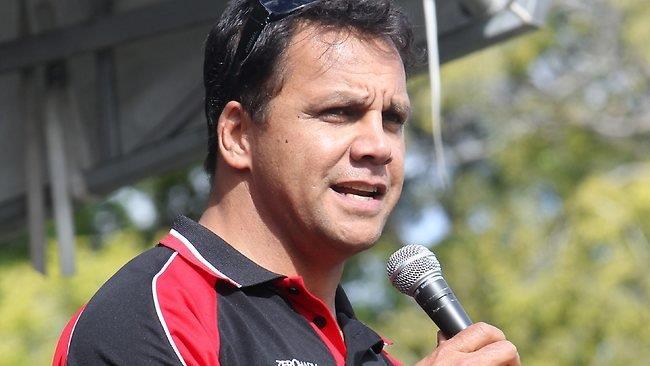My Health Record and the Medicines Safety Program
Published 19 May 2017
By Steve Renouf.
In 1993, I was diagnosed with Type 1 diabetes, and it turned out that my four sons have it too, so we all have ongoing treatment for it. Eventually I got involved with Diabetes Australia and the Juvenile Diabetes Research Foundation as their ambassador, which led to advocacy work with the diabetic community. For the last six years, I’ve worked for the Institute of Urban Indigenous Health, which is based in the South East Corner. We started off with four Aboriginal Medical Services and have grown to 18 services. At first I wasn’t sure if I was a good fit, because it’s a Commonwealth Advisory Committee and I don’t have a medical background; I wasn’t sure what I could contribute. But I soon realised it’s important for someone to represent consumers, ensure their best interests are on the table. I see myself as a bridge between them and the medicos.
I’m also working as co-chair of the Agency’s Medicine Safety Program. It’s a vital program with the potential to save many lives. Every year, thousands of mistakes are made with medicine prescriptions, leading to hospitalisations and even deaths. These mistakes can happen when a patient is seeing more than one doctor for different ailments and getting prescriptions from each of them. The patient ends up being over-prescribed or taking dangerous medication combinations. It can get complicated and hard to track.
I know of one case where a young woman was seeing two psychiatrists, both unaware that each of them was prescribing her with medication. She ended up taking too much, which made her condition worse, leading to severe depression and eventually suicidal tendencies. Luckily for her the over-prescription was found out in time, the dosage corrected and her mental health issues addressed. Today, she’s doing well, studying at a tertiary level and getting on with life – a great outcome. Many others aren’t as fortunate.
The good news is digital health can help stop these dangerous mistakes from happening by gathering a patient’s pertinent medicine information into one secure online place – the My Health Record. Only authorised doctors or other medical professionals can access it and see exactly what medications a patient is already taking, make sure there are no double-ups or incompatibilities, and update their record with their own prescriptions.
My Health Record will be very useful when people are travelling. If you’re away from home and need to see a new doctor, with your permission they’ll be able to pull up your My Health Record, check your history, see what prescriptions you’re on and treat you with that information in mind. For me, it’s one of the most important features of digital health; that no matter where I go, a summary of my medical information is accessible.
The Agency’s Medicine Safety Program has been set up to help put this system into common practice. Our goal is to improve the quality of online medicine information so that doctors and patients can make better healthcare decisions and achieve better results.
I’ll admit there are challenges getting some of the Indigenous communities to take on digital health. Many of our people live in remote areas without wifi or even computers. The infrastructure has to be improved for digital health to make a difference across the board. But I’d say the biggest stumbling block is getting patients to believe their private medical information will be secure and used for the right purpose. There’s a lot of cynicism out there; that online records are just an excuse for governments to collect information about us. Part of my job is assuring people that only authorised doctors can access a person’s My Health Record, with strict safety checks along the way to ensure their privacy. Once access is granted, the information is only used for the purposes of improving a patient’s health and wellbeing.
That said, the feedback I’m getting is that Indigenous communities are pretty much in favour of digital health. It’s just a matter of putting the right infrastructures in place, and educating people about the benefits of adopting the service. Once they do, it’ll save lives; it’s that simple.
Steve Renouf is a former professional rugby player for the Brisbane Broncos. He now advocates for Indigenous health issues and is currently co-chair on the Australian Digital Health Agency’s National Medicine’s Safety Program.

Follow Steve on Twitter @TheRealPearl03